You could be forgiven for thinking that travelling a costume exhibition overseas was just a case of packing it up and shipping it off to the borrowing institution. It turns out to be a lot more complicated as I discovered when preparing the Body Beautiful: Diversity on the Catwalk exhibition to travel from National Museums Scotland, Edinburgh to the Textilmuseet in Borås, Sweden where it is currently on display.
The Body Beautiful exhibition highlights the power of representing wider ideals of beauty in mainstream fashion, covering five main themes– Race, LGBTQIA+, Size, Disability and Age. Due to its success in encouraging an essential dialogue surrounding diversity in the global fashion industry, it was picked up by the Textilmuseet in Sweden to be displayed on an international stage in February 2020.
But how DO you travel an exhibition of 26 objects with complex, structural and technical needs such as mannequins with metallic caged legs and sculptural bodysuits made from rubber tubes? Not to mention the colossal shoulders of the Charles Jeffrey LOVERBOY’s padded Argyll jumper.
With some difficulty, but successfully nonetheless as we are about to discover!

Front of the FTL Moda ‘Cage’ dress showing the protective packing measures made for travelling this garment on its mannequin. Silk and polyester wadding pads were made to protect areas of contact and prevent abrasions. Look On loan from FTL Moda NYC 

Back view of the FTL Moda ‘Cage’ dress. The structure of the dress was supported using cotton tapes to take the weight of the dress at its strongest points. Look On loan from FTL Moda NYC 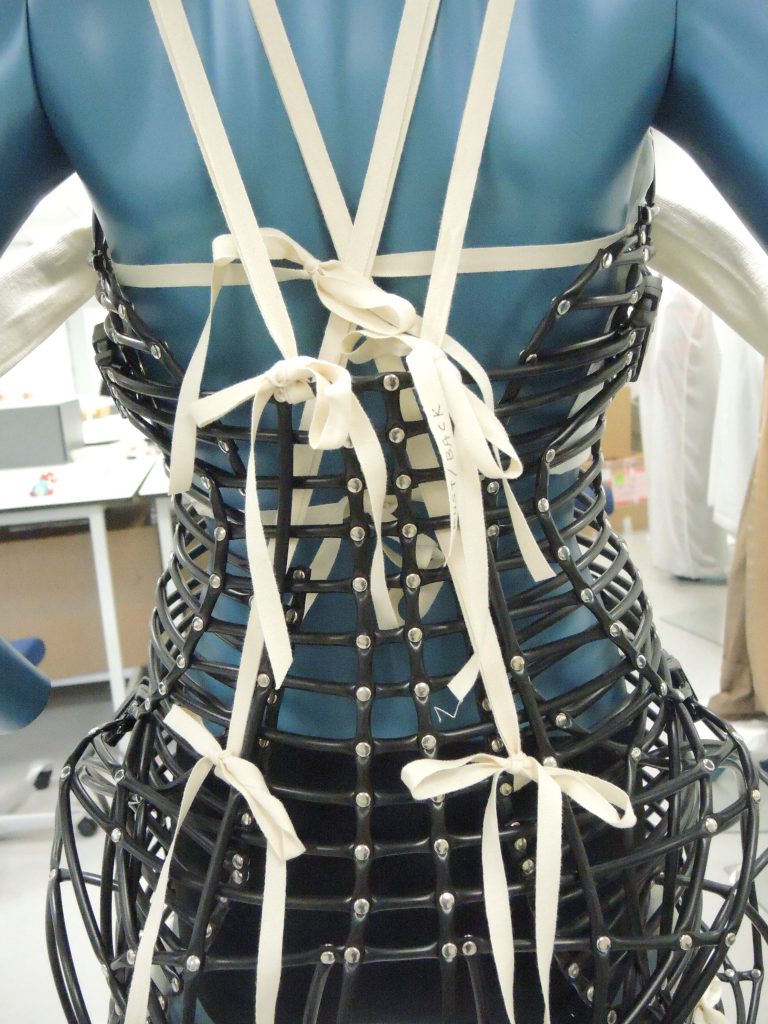
Maintaining Conservation Standards for Travel
First and foremost, conservation issues had to be carefully considered about how we could safely transport the objects to Sweden (and beyond). This had to be done safely, securely and with absolutely minimal physical change to the objects, such as creasing, abrasion and structural deformations which potentially may have been caused by the vibrations of a truck, plane or ship during transport.
Practical issues
14 of the mannequins travelled in upright crates with the garments on the mannequin, to avoid excessive handling and to speed up installation. To prevent the mannequins from moving, they were meticulously secured into the crates using foam covered wooden blocks and pressured neck batons drilled into place with bespoke neck-pieces.

Silk and Tyvek covers were custom made to each object to protect the garments, as well as silk arm protectors and individual protective solutions for vulnerable elements. Much thought had to go into how to successfully protect each part of the garment and anticipate potential damage. For example, how do you hold an oversized trouser leg up without creasing it or stitching through it?? Well…
You make a tubular shin guard from Plastozote and polyester wadding and cover it with silk. This sits around the mannequin’s shin on an ankle prop and safely holds up a trouser leg, preventing it from potential dust contamination from the floor of a crate or suffering structural interference caused by stitching.

‘Shin -pad’ mechanism used to effectively hold up the oversized trouser leg of the Max Mara look, on loan from “Archivio d’Impresa Max Mara” 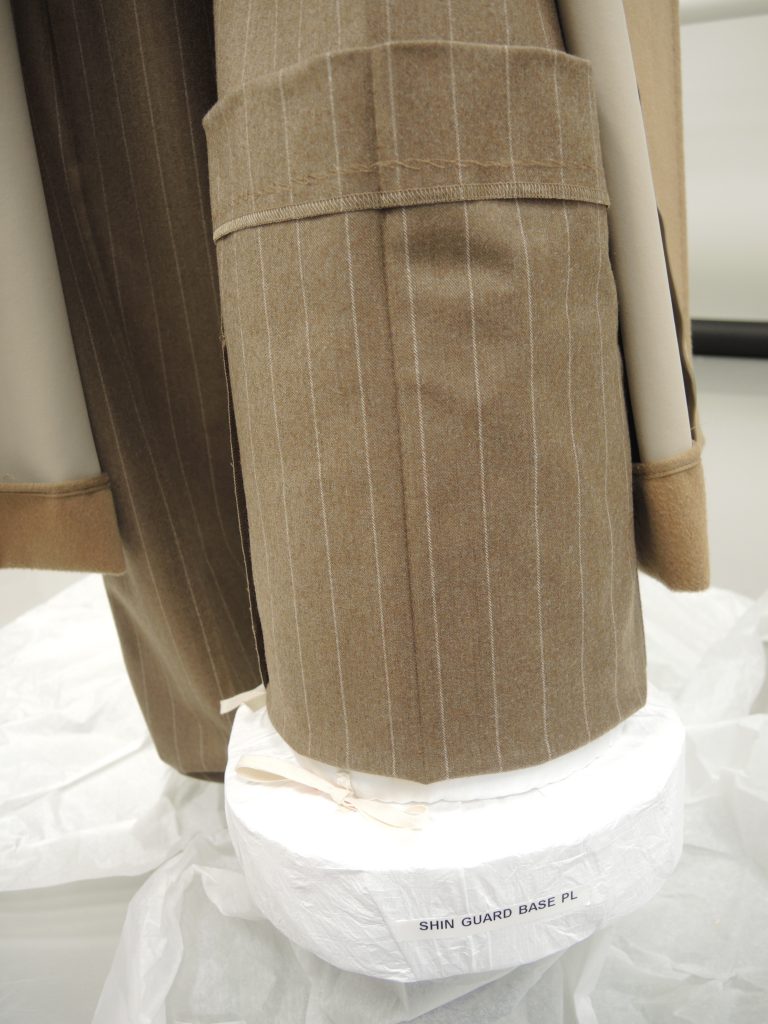

Mannequin parts
The mannequins we use from Proportion London have removable hands, arms, neck-caps and legs which all needed to be removed and secured before travel. The hands and neck caps were nestled safely into pre-cut recesses in a box for transport with the crates.
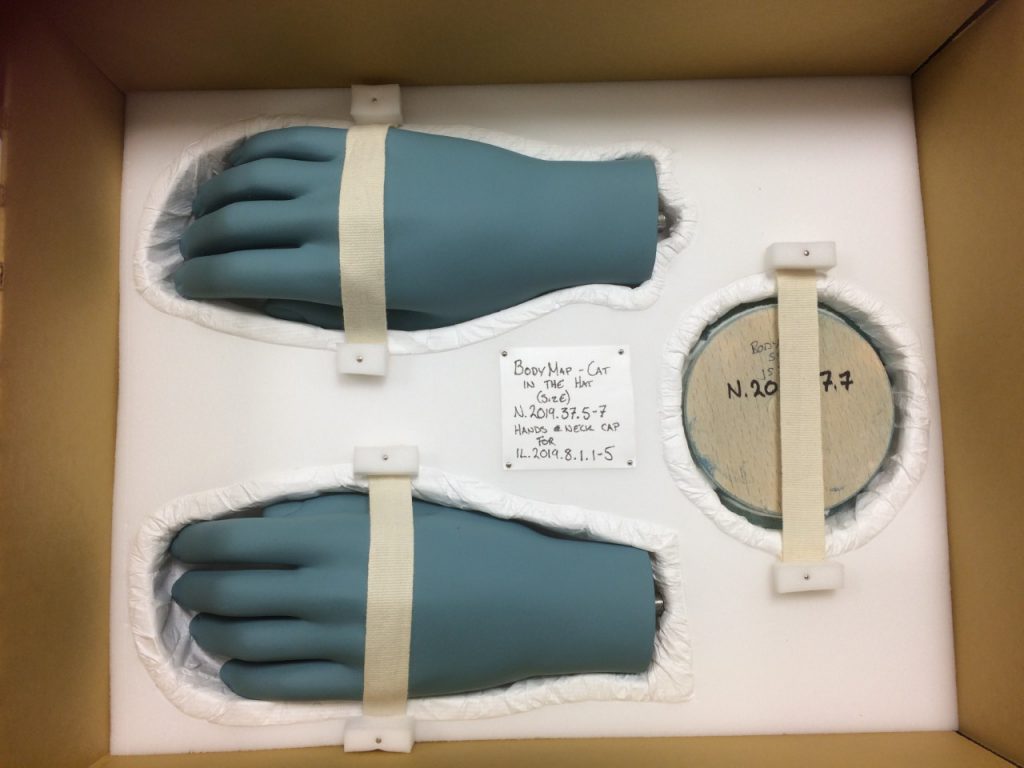
Flat packed objects
The other 12 outfits and mannequins were travelled flat packed in boxes. Sounds very straightforward, but in reality the flat packing of the costume was one of the most time consuming aspects of the tour. Each individual item had to be carefully packed into its box, again, anticipating movement and potential damage and taking steps to reduce this.
As a result, each item got its own carefully made support system. Textile boxes had several layers inside, built up with conservation grade cardboard and Plastozote, with each object supported and protected within.
The Ashish Looks consist of a heavily embellished dress, and a shirt and trouser ensemble made with metallic threads, sequins and beads. All of which presented their own specific packing issues.

For transport, the shape of the dress was cut out of a 50mm Plastozote block, coated in protective Tyvek, to prevent excessive movement during travel. An insert was made to pad out the inside of the dress and prevent the heavy embellishments from damaging the lining. The insert was made using polyester wadding which was covered in silk habotai fabric. Small cotton tapes were stitched to the bottom of the cotton-lined box and the padding, and then tied together to aid minimal movement and ‘jiggling’.

Details of the Embellished Ashish dress packing. Look on loan from Ashish 
The box was built up and the next layer housed the shirt and trousers. The metal threads and beading decoration meant that all the layers of the arm and leg fabrics had to be prevented from touching each other due to the risk of snagging. Silk pads and bags were made to protect the fabric when folded and cotton tapes used again to secure the objects into the box.
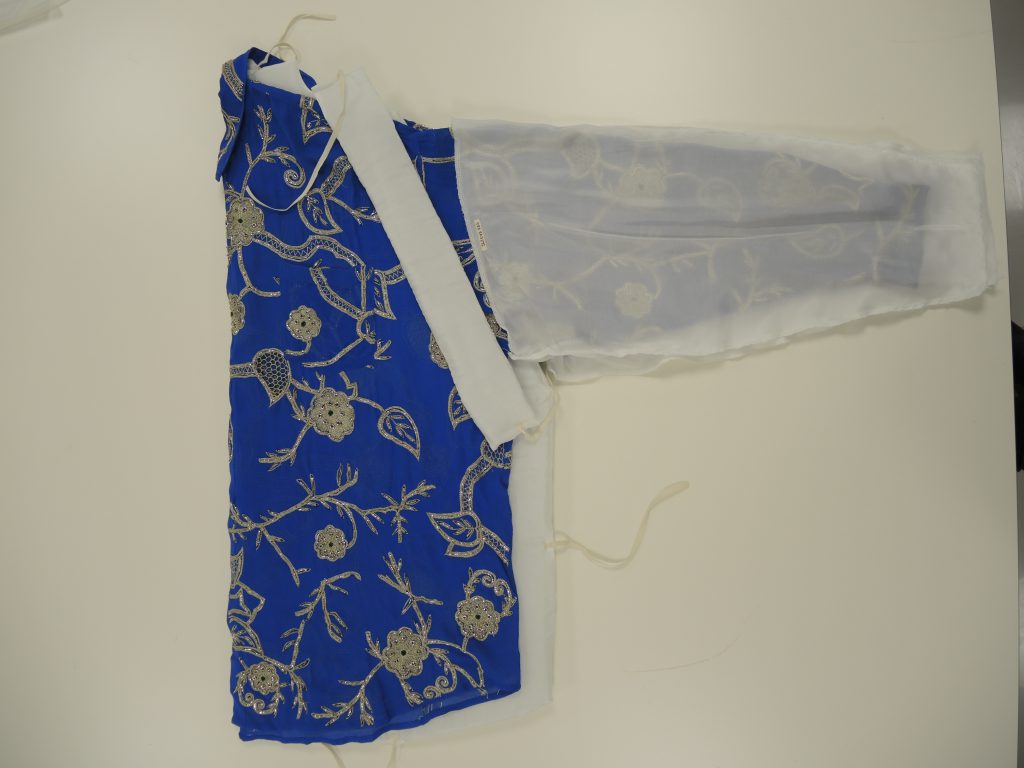

Details of packing methods used for the embellished Ashish men’s shirt and trousers. Look on loan from Ashish
Packing the accessories
To maximise the space potential and minimise the use of multiple boxes, accessories were packed into neatly prepared spaces within the one box. This allowed us to utilise every inch of space available within the limited space of the crates.

Each item was cradled in its own space with appropriate labels, support systems and strapping. Something similar to playing a game of Tetris, but with fragile museum objects and the game takes a week and a half to build!
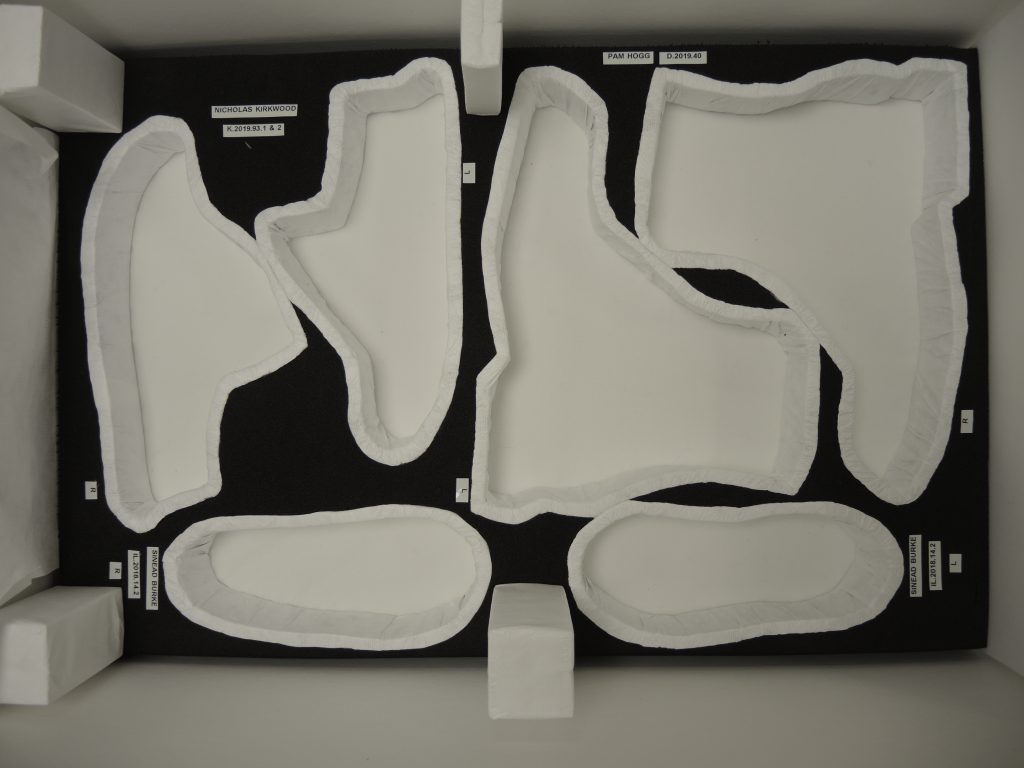
Once every packing aspect of the upright, flat and accessories crates and boxes had been completed we had to write detailed instructions describing how to unpack and re-pack the crates and boxes, as well as instructions on how the garments needed to be mounted. It was necessary to get these as accurate as possible. Covid-19 has impacted on the exhibition as it was due to be deinstalled in May 2020, and will now remain in Sweden until plans can be made to move it when the time is right.
The end result
These are just a few examples of the type of work that went into preparing the 26 mannequins for the Body Beautiful exhibition. In total, it took four conservators hours of work over the space of three months to physically prepare the objects, mannequins and accessories as well as detailed paperwork to accompany it to Sweden, not to mention the help and assistance from many other colleagues within the museum.
I don’t think that I could have imagined the breadth of work and innovation needed to tour a contemporary fashion exhibition. However, I can rest safely in the knowledge that all of the Body Beautiful objects are secure and well protected from the potential risks of travel and can continue to spread positive messages of diversity in fashion from within the setting of a Museum.



